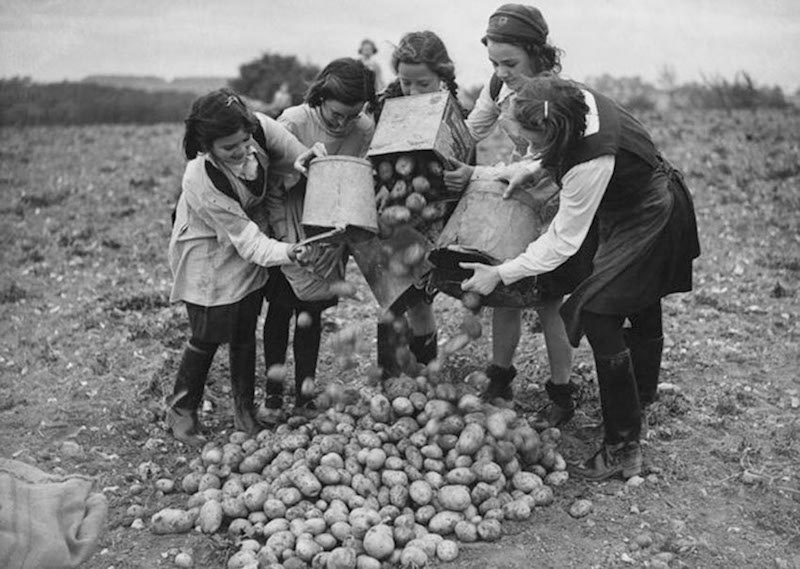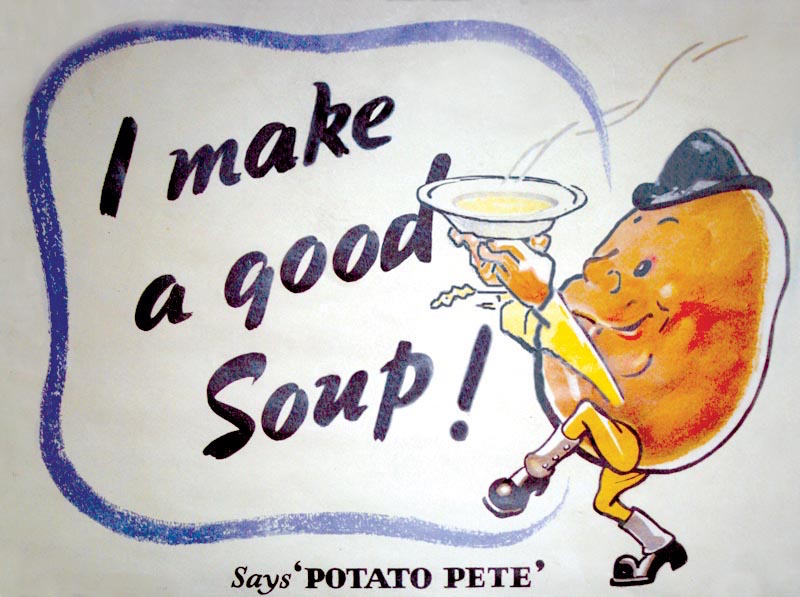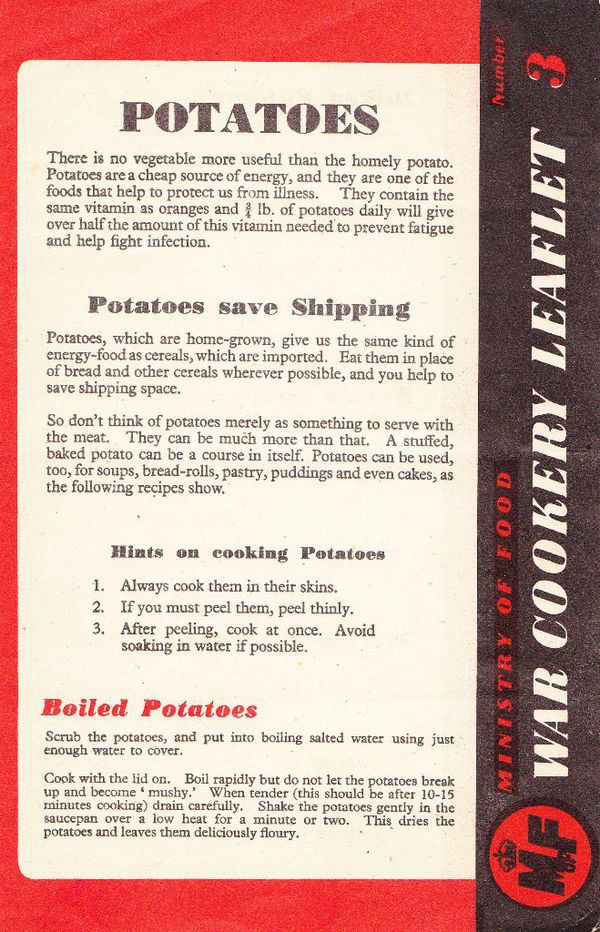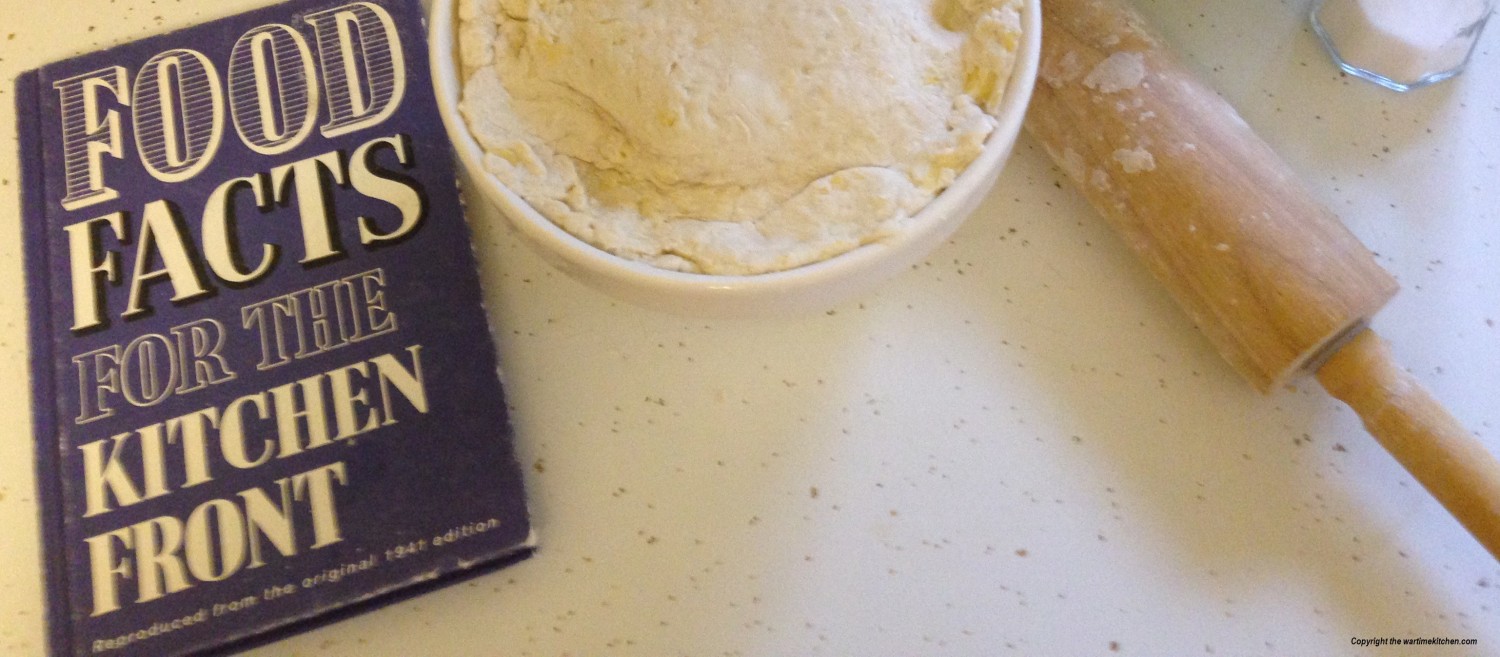The common potato became a key ingredient and a staple of the average diet during Wartime in Britain. Potatoes were easy to grow and abundant in the United Kingdom. Potatoes were also filling and were marketed as an energy food. “Potatoes help to protect you from illness,” said a leaflet on potatoes issued by the Ministry of Food. “Potatoes give you warmth and energy. Potatoes are cheap and home-produced. So why stop at serving them once a day? Have them twice, or even three times — for breakfast, dinner and supper.
P’s for Protection Potatoes afford;
O’s for the Ounces of Energy stored;
T’s for the Tasty, and Vitamins rich in;
A’s for the Art to be learnt in the Kitchen.
T’s for Transport we need not demand;
O’s for old England’s Own Food from the Land;
E’s for the Energy eaten by you;
S’s for the Spuds which will carry us through!
Potatoes plants were found in every Victory Garden. Potatoes were even planted on the tops of Anderson shelters; garden pamphlets encouraged everyone to use any plot of land to which they had access; digging up flower gardens to using backyard plots and even window containers to grow vegetable and herb gardens. Leeks, turnips, cabbage, lettuce, and swedes were popular as seeds were initially and readily available and grew well in British soil.





